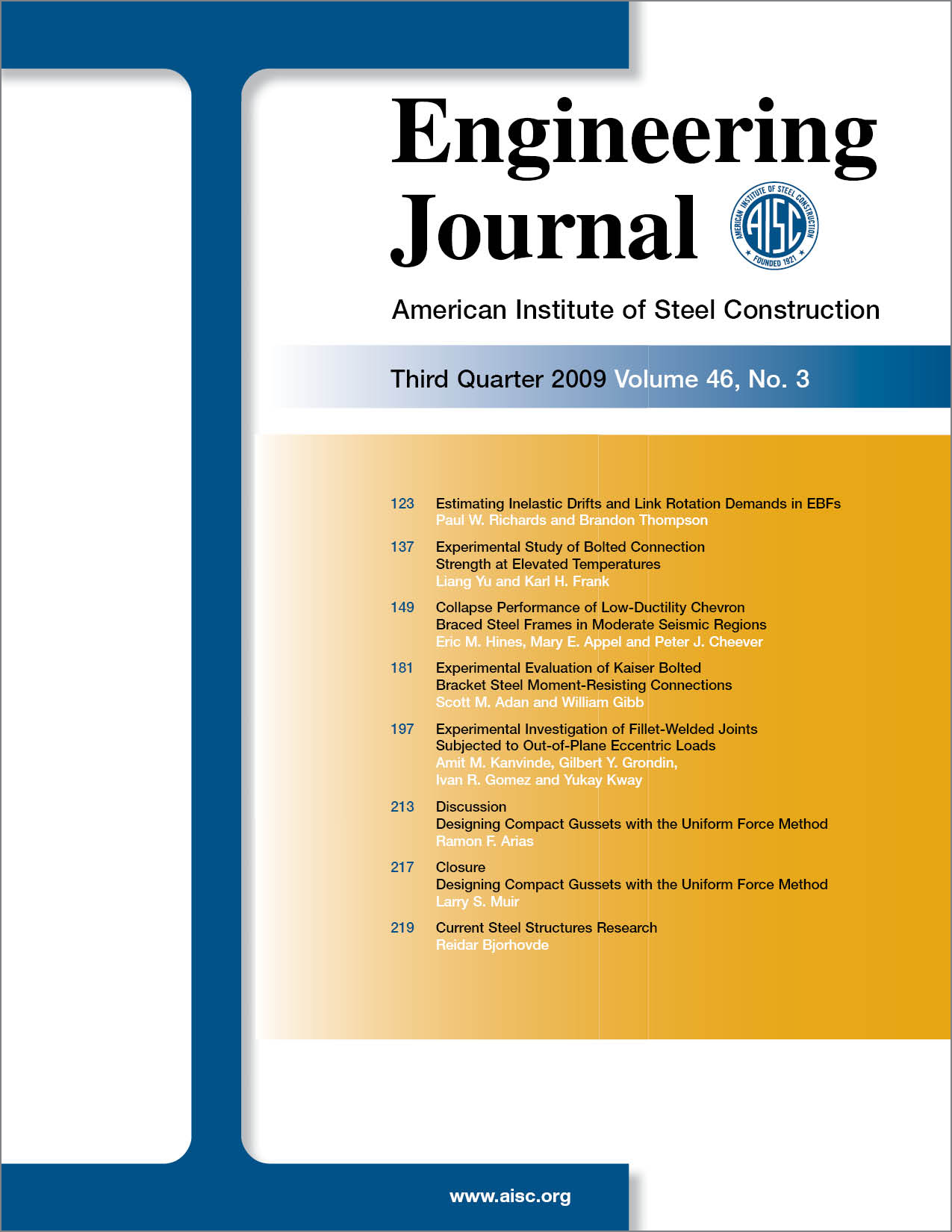Collapse Performance of Low-Ductility Chevron Braced Steel Frames in Moderate Seismic Regions
DOI:
https://doi.org/10.62913/engj.v46i3.957Keywords:
lateral systems, seismic designAbstract
This paper discusses non-linear dynamic collapse behavior observed in analytical models of low-ductility chevron braced steel frames designed for 3-, 6-, 9- and 12-story building configurations in Boston, Massachusetts. For each building configuration, three separate designs were developed assuming R = 2, 3, and 4 with no seismic detailing, but accounting for some lateral capacity in the gravity system. A fourth design was developed as a low-ductility dual system, with a primary braced frame system designed to resist wind only, and a secondary moment frame reserve system. These analyses bring to light the need for a clear design philosophy for low-ductility structures in moderate seismic regions. Based on encouraging results for the low-ductility dual system, the concept of reserve system design offers a step toward the definition of this philosophy.

